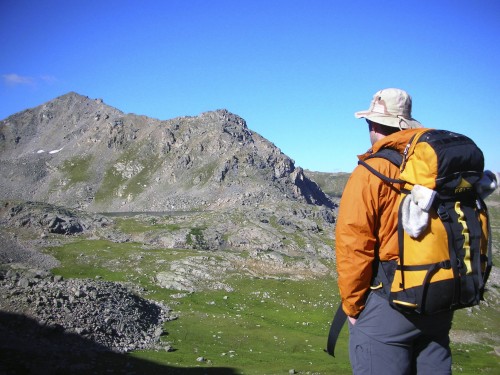Adventure Travel Safety
- Details
 1. Know Before You Go
1. Know Before You Go
Education is probably the single most important factor determining your safety and survival in the great outdoors. The level of first-aid training you'll want to have can range from basic first-aid to wilderness survival and will depend on your destination. Although it's probably not a bad idea to be up-to-date on your basic first-aid and CPR skills all the time (regardless of your travel plans), don't underestimate the level of training you may need for a trip to a remote location -- better to have these skills and not need to use them. And the more you know, the less likely you are to panic if you find yourself in a difficult situation. In addition to health & safety training, which can be useful when reacting to a difficult situation, proactive training can go a long way toward improving your comfort and safety during adventure travel. Many adventure sports are very technical and require proper technical training. Some activities, such as SCUBA diving, require formal certification before you can participate. Do your research, find the training and/or certification course necessary for your planned activity, and be sure that you're comfortable and confident in your skill level before you head out on your own. From small wilderness first-aid and survival courses to full fledged schools that offer college credit (i.e. the National Outdoor Leadership School, http://www.nols.edu) surely you will find something that fits your needs.
2. Plan Your Travel and Travel Your Plan
Always make a plan before heading into the wilderness. Do your homework and find out about the area you'll be in. This will help you prepare for the conditions you might encounter. Write everything down as part of your full trip plan. Although small departures from the plan are ultimately what define an adventure, proper planning is key to maximizing your safety and enjoyment during adventure travel. Before you depart, leave a copy of your plan with a trusted family member or friend. In the past it was recommended you leave an additional copy of the plan on the dashboard of your car, however this practice has been reported in some instances to contribute to thefts at the trail head. Use your discretion in this matter. These steps ensure that should something happen to you, a rescue can be mounted quickly and the search area can be defined readily. And of course, be sure to check in with the person you left your plan with once you've completed your trip.
3. Do Not Exceed Your Limits
Although pushing your limits can make you stronger, flagrantly exceeding them may make you a statistic. Keep this in mind while planning your trip. Know the limits of your training and your equipment and never exceed them. Equally important is to know your own physical limits. The more remote your destination the more you'll want to feel confident in your physical condition before you go. Again, it's probably not a bad idea to to have physical at least once a year and be up-to-date on your immunizations -- when was the last time you had a tetanus shot? -- regardless of your travel plans, but if you're headed somewhere remote you should probably consult your doctor before you go. Are there immunizations you need to travel to certain parts of the world? Are there medications that you will want to have on hand in certain parts of the world? ...or even just in case of emergency? Are you in the proper physical condition for the adventure you have planned? Remember, the goal is to have a good time and return home safe.
4. Double Check Everything... EVERYTHING Before You Go
Equipment should literally be double checked before you set out. Of course you'll examine everything before you leave the house, but it's worth remembering that items can get damaged during transit... baggage handling is not usually a 'white glove' service. It's easy to assume that this won't be an issue, because the equipment used in adventure is fairly sturdy and should stand up to relatively harsh conditions, but there is no sense staking your life, or your comfort, on that assumption. Also, make sure you check (and re-check!) the weather before you set off. The elements are part of the game when it comes to outdoor adventure, but last-minute or unseasonable weather that you've not planned for can quickly turn adventure into emergency.
5. Have the Basics and Be Prepared for a Longer Stay
Wherever you are, whatever you are doing, always have a basic survival kit. Your kit may change based on the terrain, weather, training, and experience but always carry one. Many examples of survival kits are available on the internet (http://www.google.com/search?q=basic+survival+kit). Also, never forget that circumstances beyond your control may force your stay to be longer than you have anticipated. When you head out for a day hike you should be prepared to make it through the night, if necessary. You don't have to be comfortable, just alive. In addition to your survival kit, always carry a map of the area and, most importantly, know how to use it. Some resources for maps are below: http://www.map-reading.com/ http://www.maptools.com/ Land Navigation Handbook: The Sierra Club Guide to Map, Compass & GPS
6. Insurance (Bonus)
The cost of a search and rescue can be extremely expensive. Although generally not the case in the United States, you may be billed for the cost of any search and rescue efforts you require. Insurance can be one way to hedge that bet. Numerous organizations provide insurance and many credit cards will cover you while flying, renting cars, etc. but a policy specifically for adventure travel is a good idea. Again, a search of the internet will give you many options. http://www.google.com/search?q=adventure+travel+insurance

